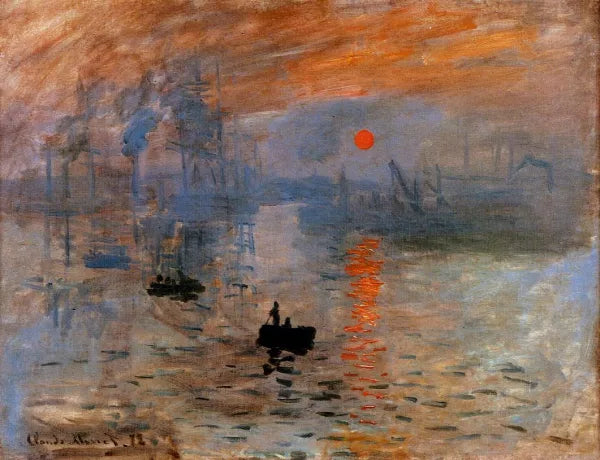Some images feel familiar before you remember their names: a sky spiraling in blue, a cafe glowing like honey at night, a branch of pale blossoms held against clean air. Bringing a hand‑painted Van Gogh reproduction into your home isn’t just about filling a wall; it’s about shaping light, mood, and the way a room breathes through the day.
Below is a human, room‑first guide to twenty beloved Van Gogh works. For each painting you’ll find what it feels like, the kind of space it suits, and a small placement thought you can actually use. Read like a tour; choose like a homeowner.
Vincent’s Early Grounding: Dutch Roots (1881–1885)
The Potato Eaters, 1885
Earthy and honest, this scene of a family at supper brings humility and warmth to spaces where you want life to slow down. It grounds a dining room with dark wood and candlelight, or anchors a study where texture and history matter. Hung a little lower than usual, it invites you closer, like pulling up a chair.
A Palette Awakens: Paris Years (1886–1888)
Self‑Portrait with Straw Hat, 1887
Fresh, direct brushwork and quick color make this portrait feel alert and modern. It livens a hallway or reading corner without overpowering it, and pairs naturally with clean frames and pale walls. Place near a window so shifting daylight plays across the strokes Vincent left on the surface.
Sun‑Drenched Arles: Icons That Live Well at Home (1888–1889)
Sunflowers, 1888
Cheerful and unmistakable, these blooms bring generosity into everyday rooms. Kitchens and dining areas glow a little warmer; hallways brighten as if they’ve caught morning light. Keep the frame simple and let the flower heads do the talking.
Cafe Terrace at Night, 1888
Amber lamplight and deep blue sky make this a welcoming companion for dining rooms and breakfast nooks. It suggests conversation without noise and turns a corner bar into a small escape. A picture light at dusk brings the golds forward and softens the blues.
The Night Cafe, 1888
Saturated reds and greens give this painting a moody, late‑hour pull that suits a media room or lounge. It feels cinematic when set against matte walls and low lighting, and it rewards a little distance so the colors hum together.
Bedroom in Arles, 1888
Quiet, personal, and slightly tilted, this intimate room reads beautifully in a study or a quiet sitting area. It calms a space without draining it, and the pared‑back furniture in the image pairs well with natural wood and linen in real life. Hang it where you like to think more than talk.
The Sower, 1888
Rhythm and ritual run through this figure in a field, which is why it works so well near an entry or in a dining room where daily routines begin and end. Earth tones and woven textures nearby echo its steady heartbeat. It feels like a reminder to start something.
Fishing Boats on the Beach at Les Saintes‑Maries‑de‑la‑Mer, 1888
Crisp color and salt‑air clarity bring lightness to bathrooms with good ventilation, coastal bedrooms, or guest rooms that need a horizon. The angled boats carry the eye forward, so narrow walls feel longer. Pale blue paint and seagrass underfoot make a natural match.
The Yellow House (The Street), 1888
A portrait of place, full of sunlight and promise, perfect for an entryway or family room. It says welcome without a word and sits easily with ochre textiles, oak, and leather. Position it where the afternoon sun can warm its edges.
Langlois Bridge at Arles, 1888
The clean geometry of the bridge and the calm water make this a strong choice for a hallway or above a console. It offers direction without heaviness and keeps small spaces airy. Black metal, cane, and light oak around it feel just right.
Peach Trees in Blossom (Souvenir de Mauve), 1888
Delicate branches and open sky bring spring indoors, especially in bedrooms, powder rooms, or small sitting areas. It’s gentle without being sweet, and the lightness helps small rooms exhale. A slim oak frame lets the whites and pinks breathe.
Saint‑Remy: Movement, Texture, and Sky (1889–1890)
The Starry Night, 1889
A sky in motion turns a living room wall into a conversation that never quite ends. High ceilings and a bit of breathing space let the spirals unfold, while neutral textiles and oak give the paint somewhere calm to land. It’s dramatic, but in the way a great view is—present, not loud.
Starry Night Over the Rhone, 1888
Softer than its famous cousin, this night scene glows by lamplight and suits bedrooms, reading corners, and intimate dining nooks. The water slows the rhythm and the reflections feel like a quiet soundtrack at the end of the day.
Irises, 1889
Color without tension is rare; this has it. Bedrooms and entries love its calm clarity, and soft textiles make the blues feel richer. It rewards a simple frame and a wall that doesn’t compete.
Wheat Field with Cypresses, 1889
Wind in the grain and a dark, steady cypress give a living room or stair landing both movement and a spine. Natural rugs, travertine, and a touch of greenery nearby let the landscape feel like a window that happens to be painted.
Olive Trees, 1889
Textured greens and warm ground tones are at home in sunrooms and dining spaces with plants. It connects easily to rattan, limewash, and pottery, and it likes daylight—the more the better.
Almond Blossom, 1890
Hopeful and serene, this is the painting that greets you gently in nurseries, yoga corners, and dressing areas. Pale blue walls and light wood keep it fresh, and morning light makes it feel newly opened each day.
Auvers‑sur‑Oise: Final Days, Clear Voices (1890)
Church at Auvers, 1890
Cool cobalt and shifting forms give a hallway or stair landing a thoughtful pause. Stone, slate, and quiet paint colors around it let the piece do its work, which is to draw you inward for a moment before you move on.
Wheatfield with Crows, 1890
Moody and spacious, this landscape adds depth to a study or media room. The path and sky are charged but controlled, so the room feels larger, not louder. A matte black frame and directed spotlighting keep the atmosphere intact.
Portrait of Dr. Gachet, 1890
A contemplative presence for libraries and workspaces, this portrait sits best with dark wood, book spines, and a chair that actually gets used. It’s more of a companion than a decoration, and it settles the room in a way that feels grown‑up and kind.
How to make them sit well together
Van Gogh’s color has range. If your home leans warm—oak, brass, linen—balance it with cool notes like The Starry Night or Irises. If your space is cool—concrete, steel, gray—lean into Café Terrace at Night or Sunflowers to bring light back in. Keep frames simple so the brushwork stays the star, hang so the center sits near eye level, and avoid harsh midday sun that flattens texture.
Mixing masters without visual noise
Keep Van Gogh as the anchor and let other masters play harmony around him. If Almond Blossom hangs in a bedroom or entry, Gustav Klimt’s Art Nouveau gold — a panel from The Kiss era or a floral motif — can live in the dining room next door without stealing the scene. When a living room carries Wheat Field with Cypresses, a Thomas Cole horizon down the hall continues that sense of distance and air on a grand, American scale. If your study hosts Church at Auvers or the weathered quiet of Wheatfield with Crows, Caspar David Friedrich’s Wanderer Above the Sea of Fog mirrors that solitary pause like a held breath between rooms. And if The Starry Night turns your main wall into a moving sky, a William Blake Great Red Dragon across a loft adds theatre and counter‑rhythm, letting Van Gogh’s blues hum while a mythic red answers from the shadows. Keep the color threads consistent — gold with gold, cobalt with night blues — and let one Van Gogh be the lead voice while the companions play in supporting keys.
A quiet closing thought
Van Gogh painted weather, light, and feeling until they belonged to everyday life, which is why his work settles so naturally at home. The hush of Irises steadies a bedroom; Starry Night Over the Rhône warms an evening table; Cafe Terrace at Night invites friends to linger; Almond Blossom opens the morning; The Starry Night reminds a living room to breathe. Choose the canvas that makes you go still for a second. In that pause, the brushwork has already found its place on your wall.























